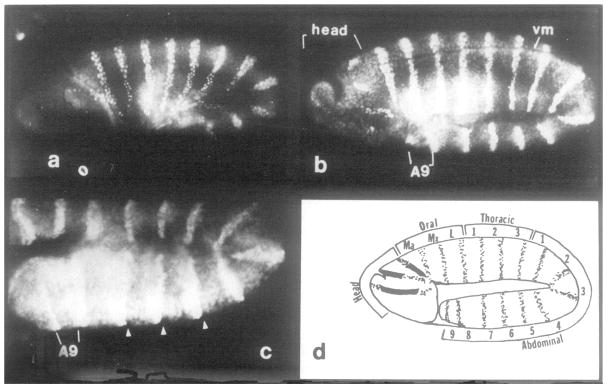Figure 5. Number and Position of Segments and Parasegments as Revealed by engrailed Protein Localization.
(a) Embryo during germ-band elongation (4 hr AEL), ventral surface up. Germ band has extended partway around the end of animal (right side) and back over 25% of dorsal surface. The maxillary and mandibular stripes are within the cephalic furrow (out of focal plane). engrailed staining is evident in labial, three thoracic, and seven abdominal primordia. (b) Embryo at full germ-band elongation (5.5 hr AEL), same orientation as in a. The deep stomadeal pocket is visible near the anterior end of the head region on the ventral surface. The mandibular and maxiliary signals are evident, since the cephalic furrow has become shallow. Three oral (gnathal), three thoracic, and nine abdominal signals are visible. engrailed protein first appears in the head region in four discrete areas on each lateral face. A9, ninth abdominal segment. (c) Detail of an embryo at full germ-band extension where the transient lateral grooves are evident on the ectoderm. Same orientation and approximate stage as that shown in b. Grooves within segments A5, AS, and A7 are marked by arrows. The grooves are anterior to the engrailed signal and are therefore at the anterior–posterior compartment boundary. Groove to groove marks a parasegment and not a segment. (d) Schematic representation of the segmental divisions in germ-band elongated embryos, as suggested by the pattern of engrailed protein accumulation. The stippling indicates positions where nuclei stain with engrailed antisera (e.g., b). The four positions of staining in the head might be derived from three prepattern stripes as illustrated by the blackened-in regions. Segmental identity can be unambiguously assigned by examining a succession of older embryos. Note that there are nine abdominal stripes, indicating nine complete abdominal segmental divisions, and a rudimentary tenth that lacks a posterior compartment. Thus, the number of parasegments is 15 at this stage in development, if counting is initiated with posterior mandibular (Martinez-Arias and Lawrence, 1985) and extended to anterior tenth abdominal (this work).

